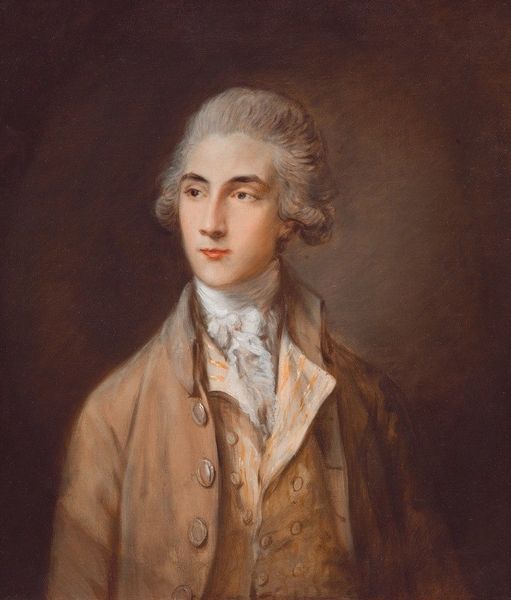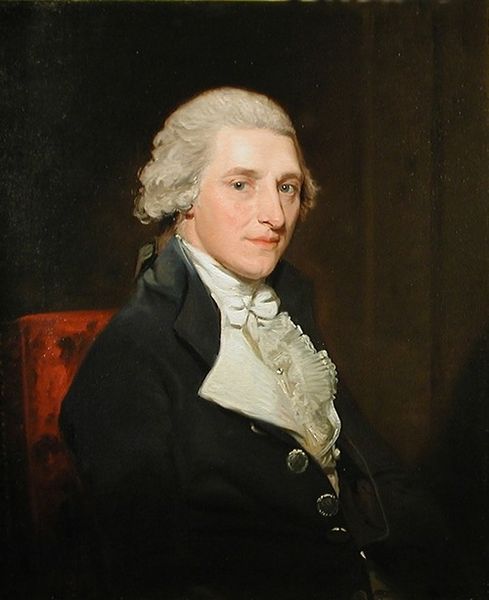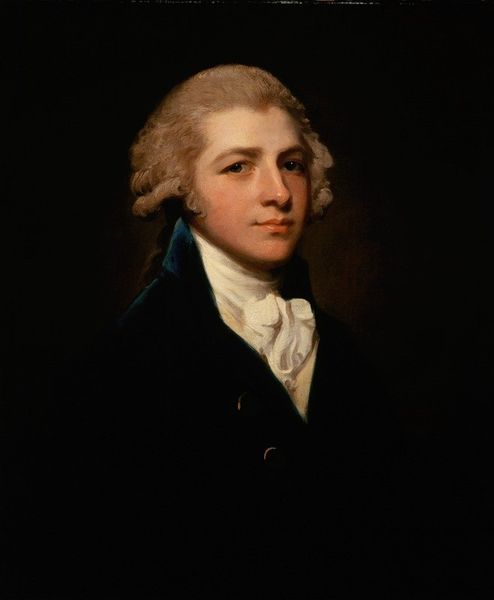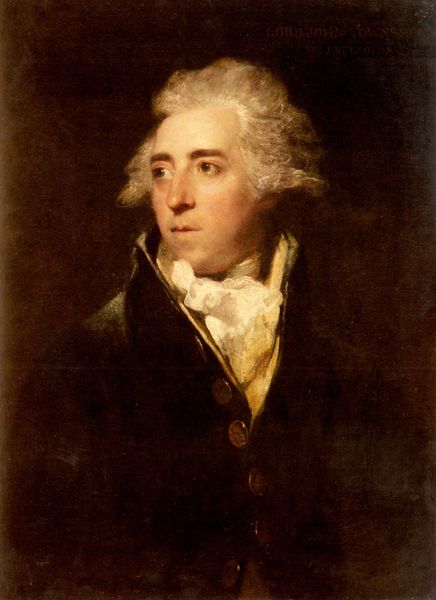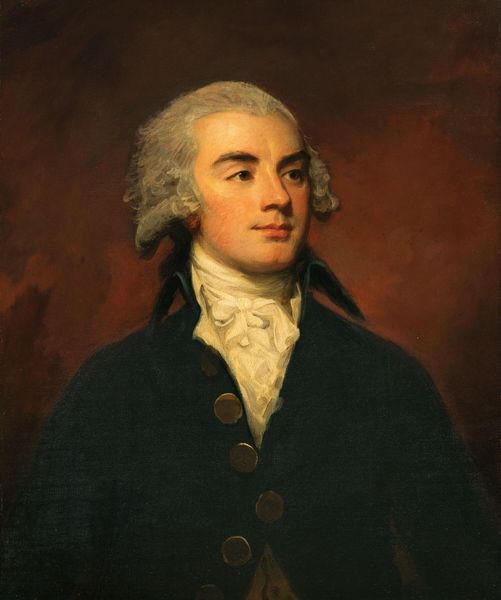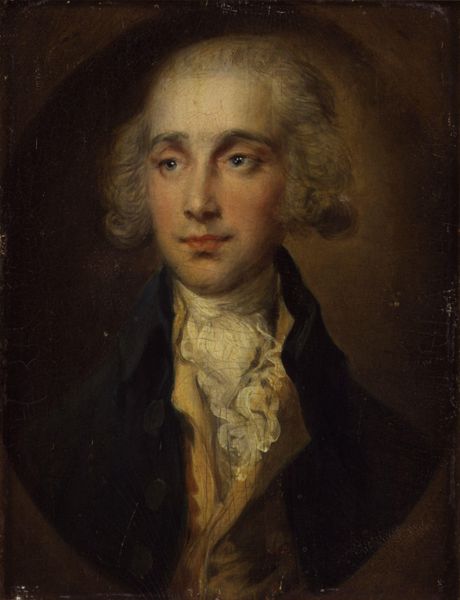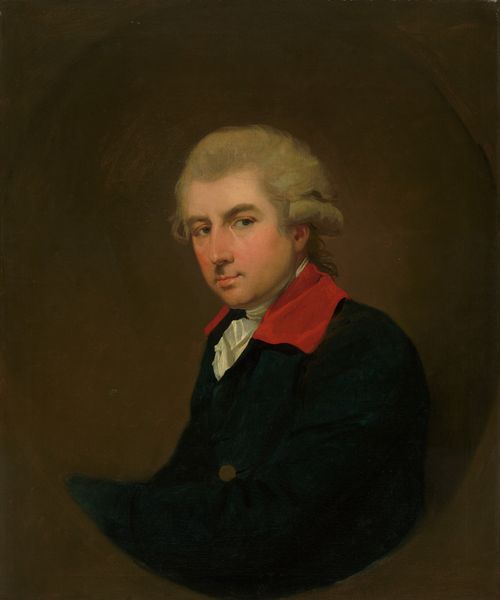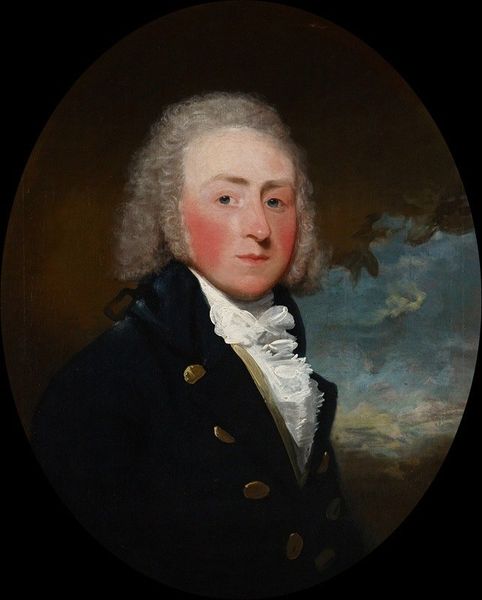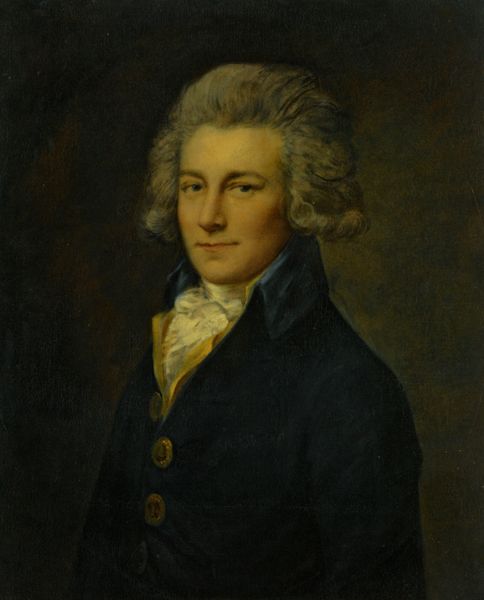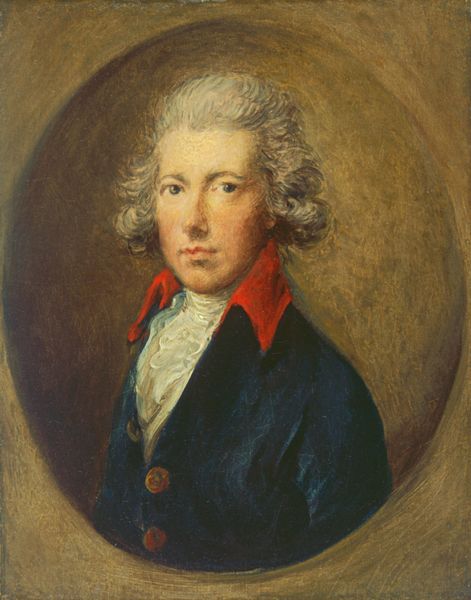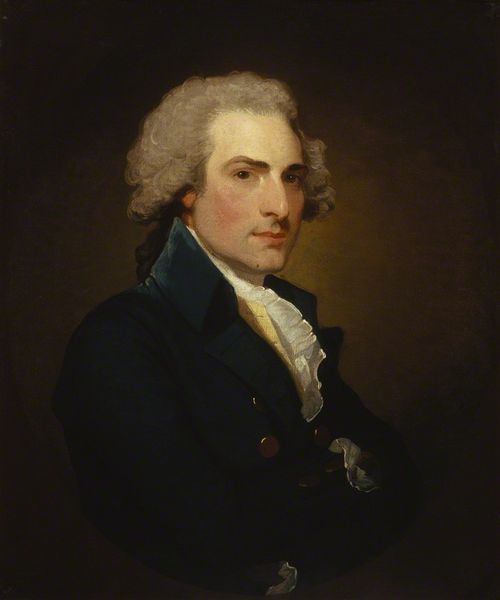
Copyright: Public Domain: Artvee
Curator: We’re standing before Thomas Gainsborough's "Sir John Edward Swinburne," an oil on canvas portrait dating back to 1785. Editor: He looks rather pleased with himself. Or perhaps it’s more apprehension— a slight tightening around the mouth and eyes. Definitely feels like the weight of societal expectation rests on those shoulders. Curator: Indeed. Gainsborough was masterful at capturing the complexities within his sitters. Notice how the subtle highlights in the powdered wig catch the light, drawing our eyes to his face and suggesting intellect and refinement. Editor: Refinement certainly curated for a specific audience. Portraits of this era so often flatten identity into a signifier of class and power. That frilly neckwear and the tailored coat scream privilege, reminding us that art and representation weren't equally accessible. Curator: Though, isn’t there a timeless quality as well? The waistcoat with the delicate vertical striping almost alludes to moral rectitude. And then the dark jacket – draped just so – brings gravitas. I think Gainsborough wants to present Swinburne as not only of high status, but virtuous. Editor: Virtuous by whose definition? Was Swinburne a reformer, or just another beneficiary of a system built on inequality? Those aren’t necessarily contradictory of course. And those probing questions seem especially vital in considering our connection with paintings like these. Curator: Of course, the symbolism doesn’t exist in a vacuum. This portrait gives us the opportunity to engage with the layers of interpretation between past and present, asking us how visual vocabularies evolve or remain entrenched. Editor: Ultimately, an artwork such as this acts as both mirror and window, and challenges us to actively decode the narrative of power—past and present—embedded within. A very sobering task, when we see these archetypes reflected around us every day.
Comments
No comments
Be the first to comment and join the conversation on the ultimate creative platform.
